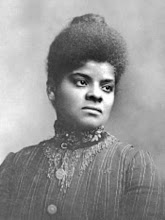When you say "Women's Aviation History" the name Amelia Earhart often comes to mind. But born before Amelia and flying before Amelia was one more beautiful black woman by the name of Bessie Coleman. Bessie got her license two years before Earhart from France. Because Coleman was black she was denied entry into US aeronautic schools that Earhart was able to attend. Consequently Bessie Coleman was the first African American woman in the world to receive an International pilot license.
Bessie Coleman was the tenth of thirteen children born in 1892 in Atlanta, Texas. She went to a one room all black school for her primary education. After her part Cherokee father left his family to seek a better life on an Indian reservation Bessie completed her high school education at a Missionary Baptist school and at 18 had one semester at the Oklahoma Colored Agricultural and Normal University (now called Langston University). She ran out of money to further her education so she moved to Chicago to stay with her two brothers. Coleman then attended beauty school and got a job as a manicurist. It was in Chicago that she began to consider a career in aviation. Coleman's brother shared stories of his service during World War I and noted the many French women who flew and were supposedly "superior" to her who would never fly. Such stories only strengthened Bessie Coleman's resolve.
She couldn't gain entry into any of the American aviation schools because she was black and in addition to that a female. On the advice and part sponsorship of Robert S. Abbott, the black owner of "The Chicago Defender" an African American weekly newspaper, she saved some money, took french classes at the Berlitz school and went to France. She was trained at the Fédération Aéronautique Internationale in November 1920.
On June 15, 1921 she became the first African American woman in the world to get an international pilot license.
Upon returning to the States Coleman realized that she would only be able to earn a living as a stunt flyer so she went back to France and then Holland for additional training. She then returned to the States where she made a name for herself doing airshows. A great crowd-pleaser, people began to call her Queen Bessie. She used her fame to affect racial discrimination as much as she could. When she returned to her hometown to perform Coleman refused to do so unless both blacks and whites went through the same ticket gates. She also turned down a movie role because she would have to demean her appearance in the movie to support stereotypes of African Americans. She dreamed of running an aviation school of her own to train other black pilots but this was thwarted by an accident in Jacksonville Florida in 1926. Her mechanic accidentally left a wrench in the engine area of the plane which jammed the gearbox during flight and caused the plane to spin out of control killing both Bessie Coleman and her mechanic William Wills.
The effect of her life on African Americans and aviation was evident after her death. Thousands of mourners attended her funeral including several important black leaders like Ida B. Wells. Several Bessie Coleman flying clubs were created and in 1931 a group of African American pilots established an annual flyover for Coleman's grave.
In 1995 Bessie Coleman was inducted into the Women in Aviation Hall of Fame and put on a US postal stamp. So the next time women in aviation comes up think Bessie Coleman first. She flew first.
Wednesday, June 9, 2010
Subscribe to:
Comments (Atom)






